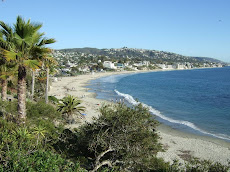
This Post will show excerpts from the Mayflower Quarterly. The quarterly provides a look at the history of the Pilgrims. i.e. European connection, why they came to America (e.g. some for religeous beliefs), and early days in Plymouth. I will also include some writings of the Natives e.g. Wampanoags who were most responsible for their survival.
The Mayflower Society's (Mayflower descendants) goal is to preserve the history of the Pilgrims for future generations.
This Post along with the Comments- my notes, and yours, hopefully will be educational and entertaining.
Check occasional for my new additions.



5 comments:
A Moment of Pilgrim History/ The First Thanksgiving
Governor William Bradford’s Journal- “and besides waterfowl there was great store of wild turkeys, of which they took many, besides venison, etc.” From the Indian corn they had “a peck a meal a week to a person.”
Pilgrim Edward Winslow Letter, 11 December 1621- “ Our Governor sent four men on fowling…they killed as much fowl as, with a little help beside, served the Company almost a week.” “Many of the Indians coming amongst us, and amongst the rest of their greatest king, Massasoit with some 90 men, whom for three days we entertained and feasted. And they went out and killed five deer which they brought to the plantation and bestowed on our Governor and on the Captain and others.”
“ the English immigrants enjoyed friendship with their native neighbors: the Wampanoags.”
Pilgrim Hall Museum reopens
On May 31, 2008, the Pilgrim Hall Museum (1824 building) opens. “its mission of conserving the 17th century artifacts of the Mayflower passengers and telling their story”.
Massachusetts Governor Deval Patrick signed an executive order establishing a commission to plan for the celebration of the 400th anniversary (2020) of the arrival of Pilgrims.”
On May 1, 1609, the Pilgrims arrived in the Dutch city of Leiden where they would spend eleven years before deciding to move to America….2009 will be the ‘year of the Dutch’ at Pilgrim Hall Museum. “the Pilgrim Society is hosting a tour to ‘Pilgrim Holland’.”
“visitors enter(metaphorically) into the hold of the Mayflower….to look at the actual events of the Pilgrim lives.” “’Pilgrims’ religious motivation artifacts such as the Bradford Bible” are on display.
Partakers of Our Plenty
The “three-day 1621 harvest celebration at Plymouth Colony….”First Thanksgiving”.
“four men went hunting and brought back large amounts of ‘fowl’….The Wampanoags and English did occasionally stuff the birds and fish, typically with herbs, onions, or oats (not English)”.
To add tartness the Wampanoag may have used cranberries (not boiled). Sugar may have not been used as it was too expensive. “Potatoes originated in South America and had not made their way into the diet of the Wampanoag.” “Pumpkin- probably yes, but pie – probably not….nor an oven in which to bake it.” No apples, “apples are not native to North America.”
Pilgrim Edward Winslow- “Our bay is full of lobsters all the summer and afordeth variety of other fish; in September we can take a hogshead of eels in a night, with small labor, and can dig them out of their beds all the winter. We have mussels….at our doors. Oysters we have none near, but we can have them brought by the Indians when we will; all the spring-time the earth sendth forth naturally very good sallet herbs. There are grapes, white and red, and very sweet and strong also. Strawberries, gooseberries, raspas, etc. Plumbs of tree sorts, with black and red, and damask; single, but very sweet indeed…
“the harvest being celebrated was that of the colorful hard flint corn that the English often referred to as Indian corn. This corn was a staple of the Wampanoag….the English had acquired their first seed corn by helping themselves to a cache of corn from a native storage pit on one of their initial explorations of Cape Cod.” (They later paid the owners for the ‘borrowed’ corn). “Our Indian corn, even the coarsest, maketh a pleasant meat as rice….traditional English dishes of porridge and pancakes (and later bread) were adapted to be used with native corn.”
Other “herbs”: parsnips, collards, carrots, parsley, turnips, spinach, cabbage, sage, thyme, marjoram, and onions.
Pilgrim Edward Winslow- “ And although it be not always so plentiful as it was at this time with us, yet by the goodness of God, we are so far from want that we often wish you partakers of our plenty.”
Very interesting Cap. I've enjoyed reading it. I'm trying to get into a little history myself. It started with the water tower but I'm now trying to find out more about that monument that is right next to me. No one seems to know anything about it or why it is where it is. I did find out that one of the reasons they are moving the firehouse from here is because it had to be bigger and because the monument had to stay there they would have to work around it. That was a minor reason but I was glad to hear it.
Native Traditions of Giving Thanks
“Everything is sacred, and giving thanks for the Creator’s gifts is an integral part of daily life.” “giving thanks was an important part of the celebration, called Nickommo, which was still held by the Wampanoag..” e.g. “If a plant was harvested and used for any purpose, or a bird or fish, if an anthill was disrupted, gratitude and acknowledgement were given for the little ones’ lives.”
Post a Comment